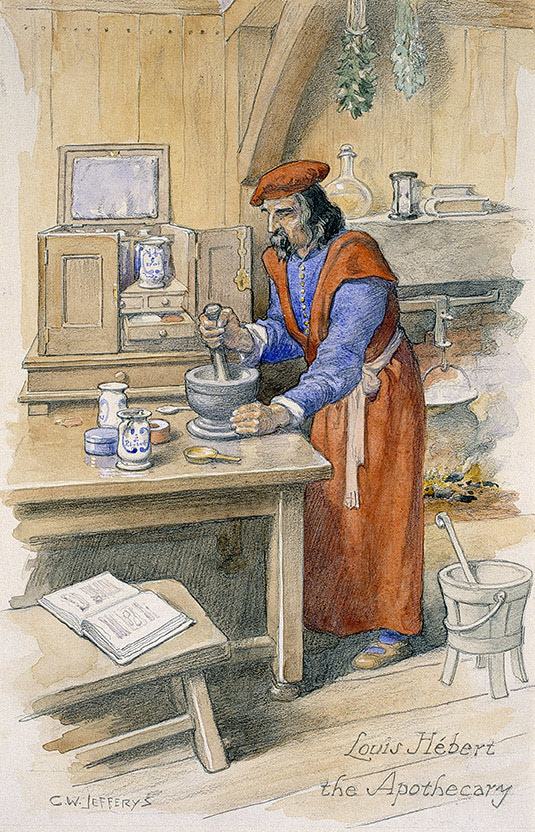Louis Hébert, an example of tenacity

Louis Hébert, apothecary at Port-Royal, Acadia, 1938
by Charles William Jefferys (1869-1957)
If Louis Hébert had been born today, we’d have called him a botanist and a pharmacist. Of course, apothecaries did not do exactly the same thing as pharmacists. But like them, they had to study for a long time: 5 years to become a master apothecary. This enabled them to own a store and equipment for making herbal medicines. However, Hébert did not make enough money with his profession to pay for his investments and support his family.
Louis Hébert had to do something else. He crossed the Atlantic twice and spent time in Port-Royal (1606 and 1611), where he forged ties with Indigenous people. He is said to have exchanged a great deal of information with them on the subject of medicinal plants. He brought back several specimens that were not known in France. Hébert thus saw the possibilities that the new continent had to offer. In 1617, he settled in New France with his wife Marie Rollet (1580-1649) and their three children. He built a stone house in addition to clearing and cultivating the land.
Louis Hébert died accidentally in 1627, after falling on the ice. Marie Rollet remained in New France, remarried and maintained her ties of friendship and support with Indigenous people.
Source: Fondation Lionel-Groulx, March 2020
Conference by Jacques Mathieu, historian and professor emeritus at Université Laval

